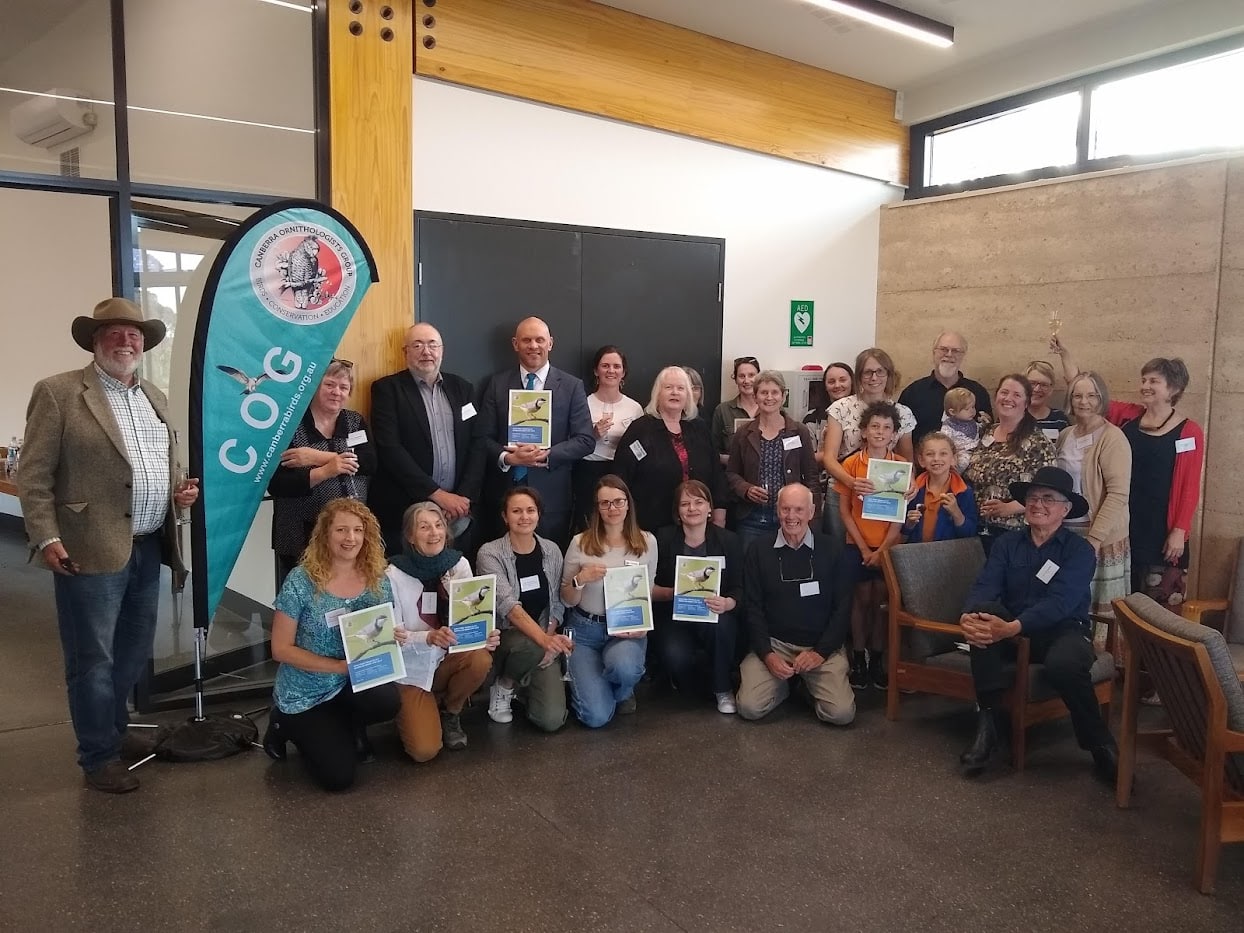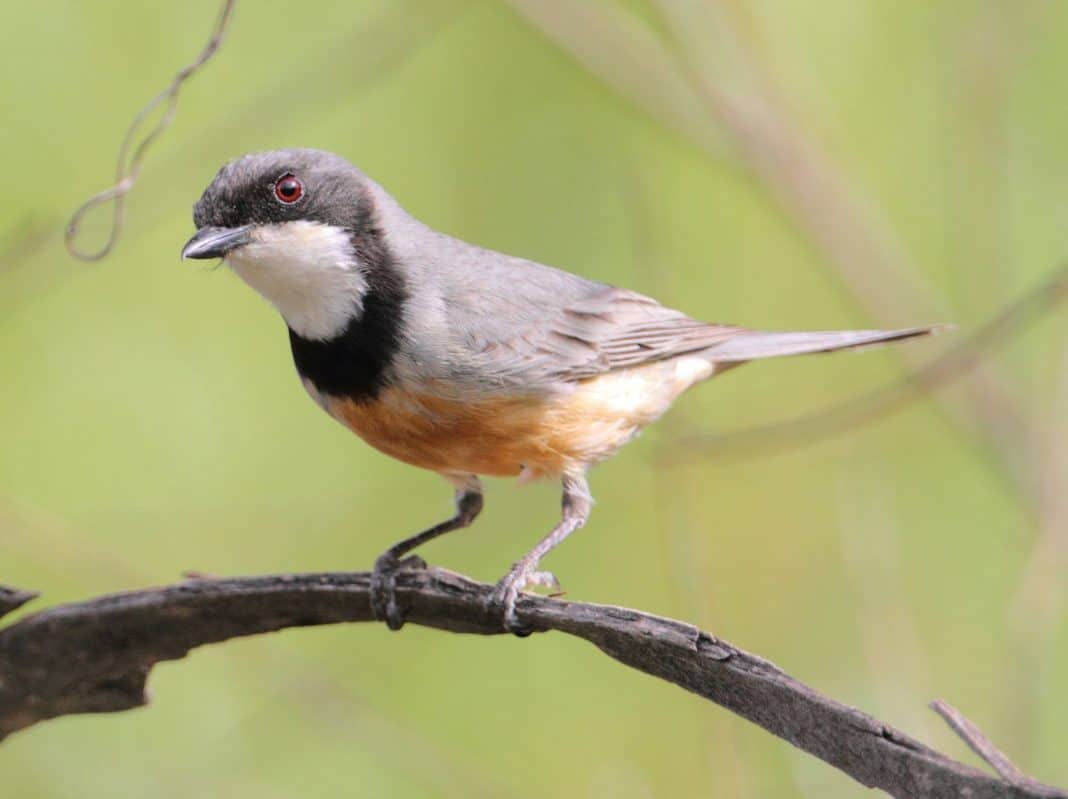Many small and woodland-dependent bird species are on the decline while some large-bodied birds are on the rise in the ACT, according to the new Long-Term Trends in ACT Woodland Birds 1998-2019 report, which guides how to design with, and for nature.
This new report, by the Canberra Ornithologists Group, presents information on Woodland birds that until now has not been available. It presents trends, highlights unknowns, and sets a framework for guiding needed future research.
The toast to the report by Dr Maxine Cooper, Chair Landcare ACT, at the launch captures its power: “A bird in the Long-term Trends in ACT Woodland Birds 1998-2019 book is worth many in the Bush Capital. May this book inspire us to design for, and with nature, and use our hearts, heads, and hands to protect all woodland birds in our Bush Capital.”
With beautiful views looking out on the mature native trees of Mulligans Flat Sanctuary, the Canberra Ornithologists Group (COG) launched its report Long-Term Trends in ACT Woodland Birds 1998-2019 onThursday 8 December at Wildbark at Mulligans Flat.
For over 21 years, COG has been collecting data across 142 sites in grassy woodland locations, monitoring each site four times a year. The results of an analysis of data indicate declining trends for some common bird species and groups, such as small birds and birds dependent on woodland habitats. On the other hand, some larger-bodied birds are increasing in abundance.
Importantly, the report identifies a priority list of bird species of conservation concern – including some threatened bird species – for which COG recommends an ongoing watching brief.
COG President Neil Hermes spoke on the role of COG, soon to be known as Canberra Birds, as great citizen scientists.
Jenny Bounds, long-time COG member and manager of the survey program, then gave an overview of the key findings, and thanked participants, some of whom had been involved since the project’s beginning.
Bren Burkevics, ACT Conservator of Flora and Fauna, spoke of the extinction crisis and the value of the report in not only showing declines but also that we might learn something from areas where bird sightings are steady or increasing.
Dr Laura Rayner, ACT Government Senior Ecologist, who collaborated with COG, highlighted the significance of the report in noting that the changes to bird populations need more research to answer why they are happening, but also raise questions about what might happen if we take steps to change the balance.
The report was launched by Dr Maxine Cooper, Chair, Landcare ACT who looked forward to COG reporting again at the 30-year mark, after 2028, and including analysis of the effects of weather and climate change on bird trends. She hoped the younger generation could help with crowd-sourcing funds for the work.
Dr Cooper also pointed to the value of designing for, and with, nature, so we protect our birds and our environment in every patch of the ACT and region. This would include developing ‘whole-of-landscape’ rural land conservation plans to protect and enhance woodland habitats and connectivity, and shaping urban planning to better protect birds and other biodiversity.
Dr Cooper’s toast for the report was: ‘A bird in the Long-term Trends in ACT Woodland Birds 1998-2019 book is worth many in the Bush Capital. May this book inspire us to design for, and with nature, and use our hearts, heads, and hands to protect all woodland birds in our Bush Capital.’
All presenters touched on the theme of how this monitoring project and report has been a wonderful collaboration across sectors, community, government and academia. Many volunteers putting in hours of bird watching time, a rigour to the design of the project, continuity, collaboration with the ACT Government and the Australian National University. Special thanks go to the COG team – Jenny Bounds, Chris Davey and Nicki Taws, ACT Government – Dr Laura Rayner and at the Australian National University – Dr Maldwyn John Evans. As well as all the volunteers who have managed the regular seasonal sites surveys over 21 years.
Key Findings
- Declining trends for 32 species, some generally regarded as common (16 species), mostly small birds, for example Weebill, Grey Fantail, Superb Fairy-wren, Rufous Whistler, and 3 species of thornbills. Both resident and seasonal species declined.
- A declining trend for the small-bodied bird community and woodland dependent birds.
- Significant increases in the reporting rates of large-bodied birds, many common, habitat generalists, adapted to urban-environments, and birds associated with degraded woodland communities. Pied Currawong and Magpie are in this group.
- An unexpected decrease in the canopy feeders group, which includes insectivores and nectar feeders such as honeyeaters.
- The trend for the Noisy Miner, an aggressive, colonial native honeyeater showed a six-fold increase, the most of any species in the analysis. Noisy Miners can suppress small birds.

The report is available at www.canberrabirds.org.au



